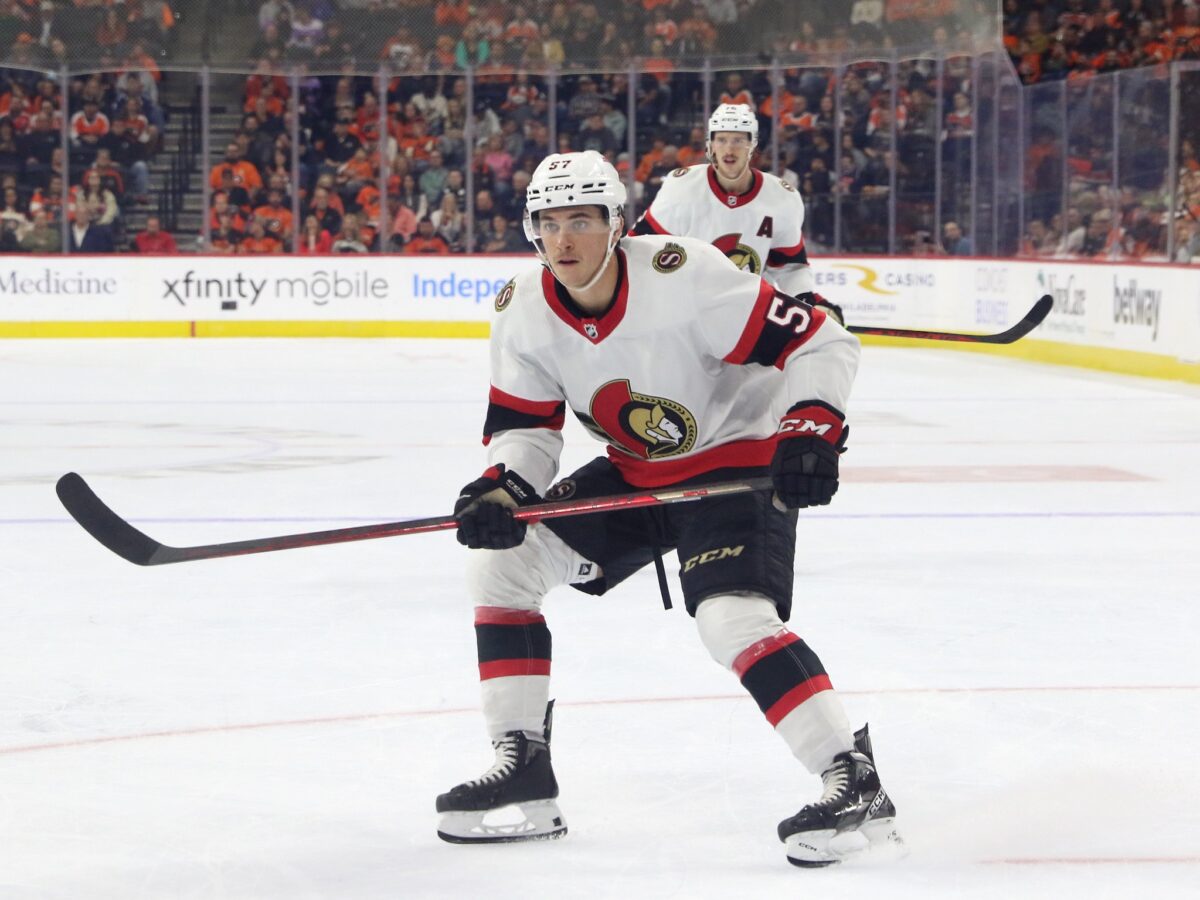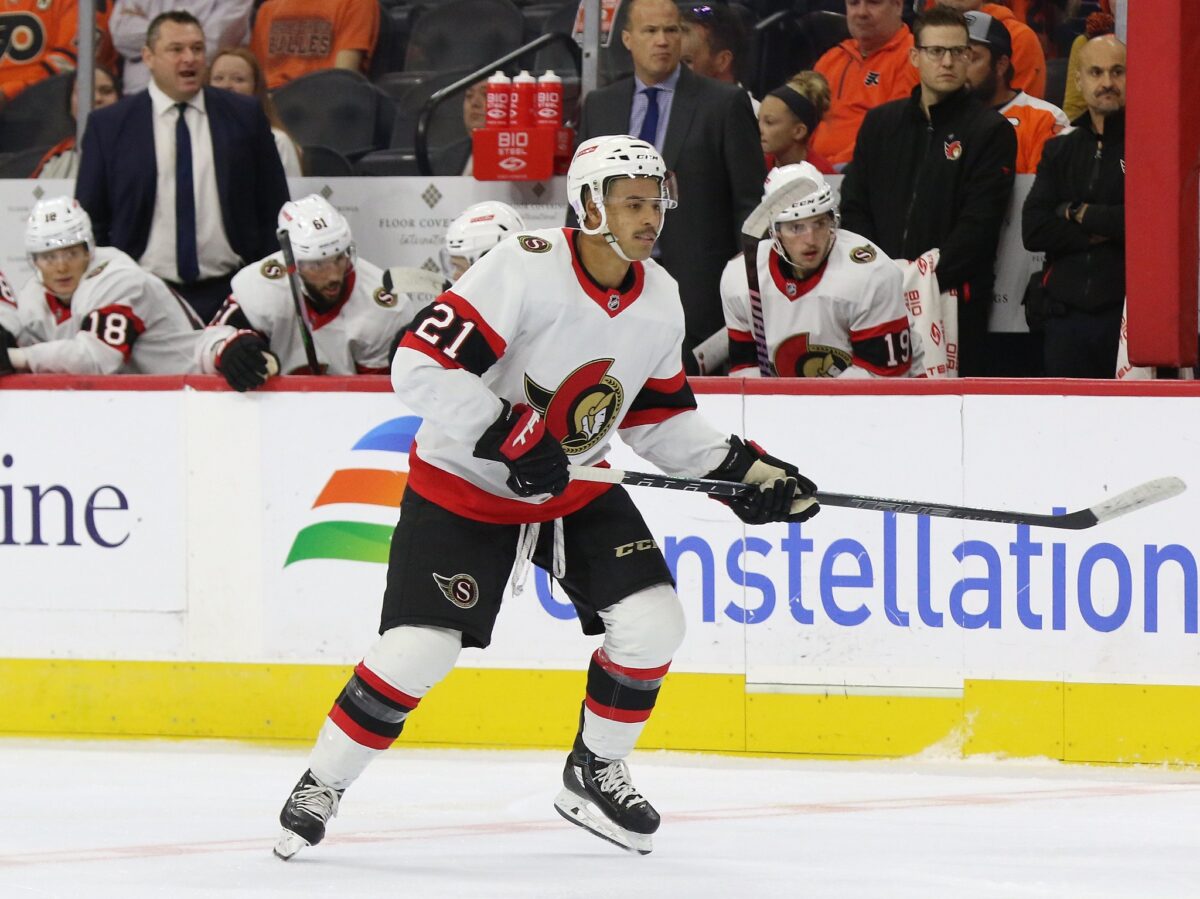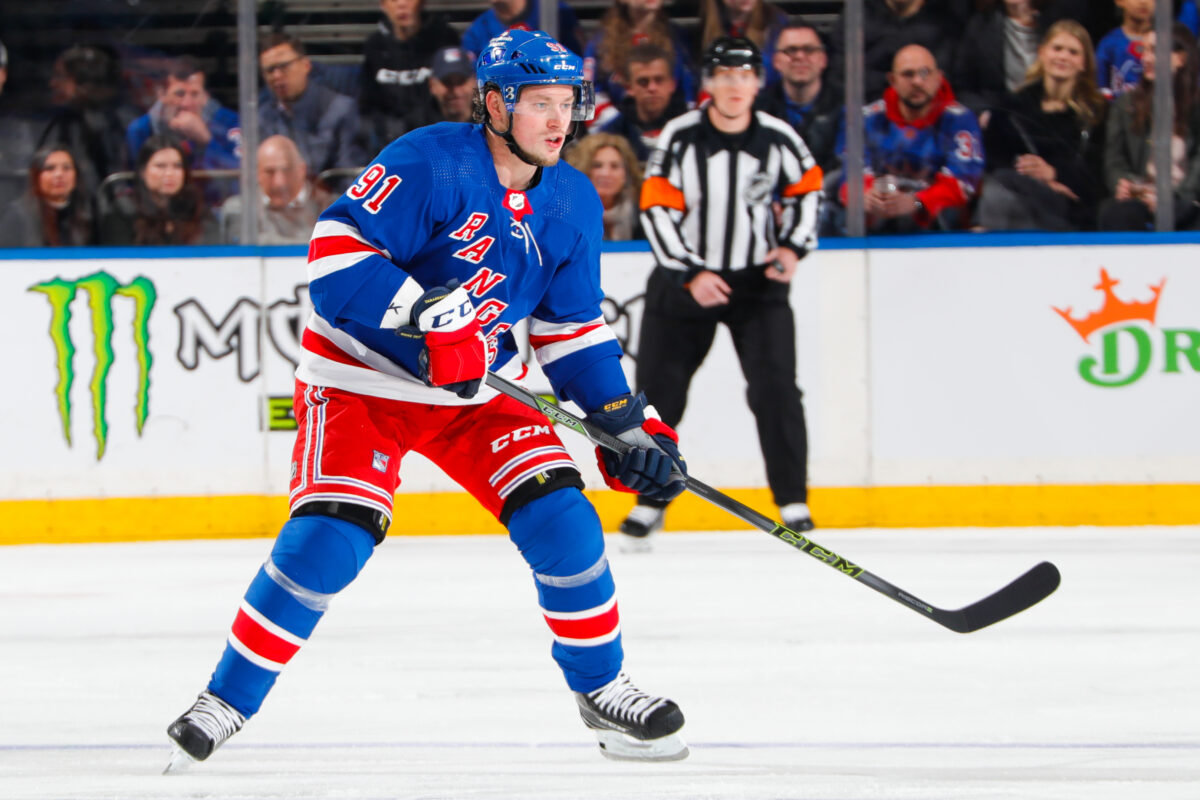As the old saying goes, be careful what you wish for – you might get it. As so it was with Ottawa Senators general manager (GM) Pierre Dorion, who in late July bagged Vladimir Tarasenko on the free agency market, inking a $5 million deal for the Russian sniper’s services next season. Now the Senators have only $896,000 in cap space, and they need to sign 22-year centreman, Shane Pinto, who offers the team great future potential, along with top prospect Egor Sokolov before opening night.
How Dorion creates the needed cap space to sign them will be the subject of barstool debates across Ottawa for the rest of the summer. Far be it from this ink-stained scribe to offer the Senators advice on the matter. Even so, I know that among my THW readers and in the Metaverse, (aka Senators Facebook Fan Groups (SFFG)), there exists a vast store of hockey knowledge possessed by the most erudite of hockey fans.
I decided to take a look at what those Facebook hockey gurus and some of my readers are advising Dorion to do.
Shane Pinto and Ottawa’s Salary Cap Problem
Pinto came to the end of a $3.975 million three-year entry-level contract (ELC) with the Senators at the end of last season that featured an average annual value (AVV) of $1.325 million and a cap hit of $925,000 per year.
Opinions vary, but most SFFG members and some THW readers think Pinto will eventually be signed to a two-year contract with an AAV, ranging between $1.5 and $2.5 million. So just to sign Pinto, Dorion may need to find up to $1.6 million in additional cap space to go along with the $895,000 he already has.
While Ottawa fans haven’t offered much advice to Dorion about Sokolov’s new contract, let’s assume the Senators could sign him for another two years at an AAV of $900,00 – a figure that is on the generous side according to Cap Friendly’s comparable contracts. What’s more, a case can be made that Sokolov may never crack a Senators’ lineup, so he’s worth less than $1 million per year for now.
Yet that’s not all. As my readers and members of SFFGs point out, it’s reckless to go without some cap space cushion to cover the unforeseen. That might add a minimum of $450,000 in additional cap space to the equation.

All told, the Senators may need to find as much as $3.5 million in cap space before the team laces up for its first game against the Carolina Hurricanes on Oct. 11.
Options for Senators to Create More Cap Space in 2023-24
I came across numerous suggestions for trades Dorion could consider to create the cap space he needs to sign Pinto and Sokolov. Most of them were combinations and permutations involving Mathieu Joseph, Anton Forsberg, and Erik Brannstrom.
Here’s a look at a few of the more intriguing ideas.
Option 1 – Trade Joseph
Joseph comes up as the top choice to be shipped out of town. The right winger underwhelmed last season, and entering the second year of a four-year contract with an AAV of $2.95 million, dumping him could solve Dorion’s cap space problem in one fell swoop. It might also fetch a second-round draft pick.
Still, trading Joseph could be short-sighted. He indeed had a bad season last year, posting a stat line of 3-15-18 over 56 games, and it may mean the Sens would need to include a pick to sell him. Yet, part of of his poor performance last season is explained by injuries.
Related: 3 Potential Cap Casualties for Senators to Consider This Offseason
It’s worth remembering that he put up respectable numbers with the Tampa Bay Lightning from 2018-19 to 2021-22 and was with the team when it won back-to-back Stanley Cups in 2020 and 2021. What’s more, Ottawa got a glimpse of what he could do when he scored four goals and posted 12 points over just 11 games in the spring of 2022 after coming to Ottawa as part of the deal for Nick Paul.
Still, it’s hard to argue that with Tarasenko on board, Joseph is essential in the lineup. He’s a bottom-six player and could be replaced by several prospects or a journeyman.
Option 2 – Trade Joseph, Forsberg and Brannstrom
Shipping these three out of town would solve Ottawa’s cap space problem this summer – and then some! The proceeds of the sale could be used to sign Pinto to a long-term contract that some imagine could be as long as four or five years featuring an AAV of $4 – $5 million. What’s more, some readers and SFFG members thought the trio could fetch some roster players or maybe a few picks.

Yet many thought the idea was zany. They point out that Forsberg is still on the injured reserve list and could be tough to move, right now. Not only that but with Forsberg gone, the Sens would need to call up Mads Sogaard from the baby Sens to back up Joonas Korpisalo. Moving Sogaard along too soon could hurt his development.
In addition, the resulting cap space generated amounts to $8.95 million – far in excess of what is required. Not only that, but many questioned why the Senators would sign Pinto to a long-term deal so soon. His value is yet to be determined.
Option 3 – Move Brannstrom and Dominik Kubalik
Another option readers and SFFG members raised was using D-man Erik Brannstrom with his $2 million cap hit to anchor a deal that would secure the cap space the Sens need this summer. They suggested moving newly acquired winger Dominik Kubalik along with Brannstrom to free up an additional $4.5 million in cap space. After all, Kubalik is slated to become a free agent in 2024-25.
Even so, many scoffed at the idea of moving Kubalik before Dorion and company at least got a look at him in a Senators sweater. As for the hole left on Ottawa’s blue line with the departure of Brannstrom, readers and SFFG members felt that could be filled by bringing in a veteran journeyman working for the league minimum salary. So too could bringing up a blueliner from Belleville. Jacob Bernard-Docker and Lassi Thompson spring to mind.
Option 4 – Sign Pinto and then Trade Him for a First Round Pick
This was an intriguing suggestion by a reader, but raised more questions than it answered. What’s more, the reader said it should get Dorion fired!
The key question unanswered by the reader is how much and how long Pinto is signed. It’s doubtful he’d willingly agree to anything under $2.5 million for any longer than two years.
Also doubtful in the idea is that Pinto would garner a first-round pick. It’s more likely he’d fetch a second-round pick.
Option 5 – Get Creative with the Long-Term Injured Reserve List (LTIR)
One reader suggested that Dorion should be looking at ways to use the LTIR to muddle through the upcoming 2023-24 season with Pinto (and possibly Sokolov) signed to what is essentially a bridging contract with a year or two-term paying him $1-$1.5 million per season perhaps with some incentives. In Pinto’s case at least, the understanding would be that a longer-term contract paying him what he deserves would be negotiated in 2024 or 2025 with the considerable cap space that will open then.
Next year the league salary cap is expected to increase by as much as $5 million. Add to that $1.6 million in Dead Cap space that comes free along with the expiring contracts of Tarasenko, Kubalik, and Brannstrom, and the Senators could have as much as $16 million in cap space next summer.

I’m no expert in the arcane rules of the LTIR, but I suspect the league has ways to prevent teams from gaming it to create cap space.
The Shape of Pinto’s New Contract
Pinto lacks the required number of games in the NHL to qualify as an unrestricted free agent (UFA) or a Group 2 restricted free agent (RFA). He finds himself a 10.2(c) player as defined under the NHL’s collective bargaining agreement (CBA), and this puts him in a very poor bargaining position with the Senators. He may only negotiate and sign a contract with Ottawa and may not even consider an offer sheet from another team. He is ineligible for arbitration. What’s more, the Senators are only legally obliged to give him a qualifying offer this summer of $875,000.
If the Senators took that route Pinto would sign for a year and then become a UFA. They need to sign him to at least a one or two-year deal so at its expiration, he retains RFA status.
Some readers and SFFG members felt that Dorion has to avoid rubbing the Pinto side’s nose in their sorry circumstances in 10.2(c). They point out that while the Senators may hold all the cards now, they can’t keep Pinto captive forever. Dorion needs to find a way to give Pinto and his agent Lewis Gross their dignity without leaving themselves with no other option but to dump salary, willy-nilly, to sign him.
A case could be made for the Senators to sign Pinto to a three or four-year deal with an AAV approaching $3 million. Recent restricted free agent (RFA) comparisons include the Montreal Canadiens’ Alex Newhook ($2.9 million for four years) and the Philadelphia Flyers’ Noah Cates ($2.625 million for two years).
Related: Senators’ Pinto Contract Should be Similar to Newhook’s with Habs
That’s doable if Dorion moves enough salary out, and some of the suggestions above would accomplish that. Even so, signing Pinto, who is just out of his rookie year and a bottom-six centre, to a long-term deal is risky.
As for Pinto, he may in fact prefer a two-year deal in the range of $2 – $2.5 million to allow him to establish his worth and negotiate higher compensation with the Senators or some other team at the end of that term.
Dorion’s Busy 2023 Summer
Finding cap space to sign Pinto and Sokolov without dumping salary that could hurt his team’s long-term prospects will weigh heavily on Dorion’s mind this summer. Any moves he makes probably won’t happen until after training camp.
